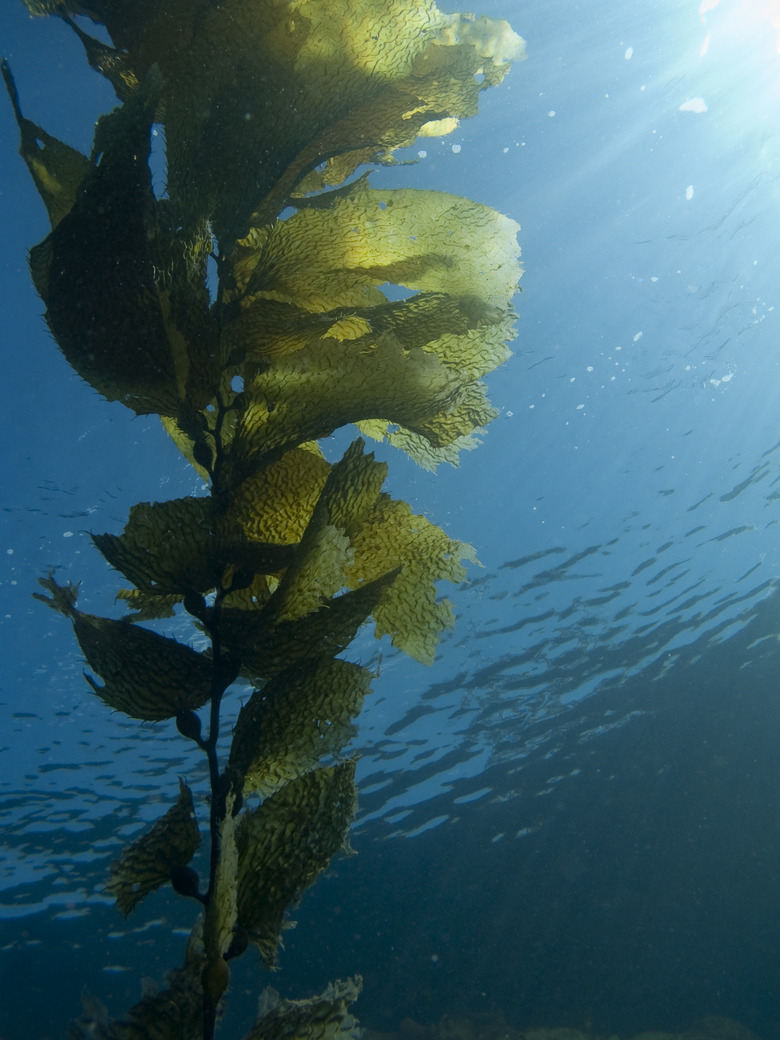Directions For Using Seasol
Seasol is a seaweed product produced in Australia. It is a blend of two kinds of seaweed: bull kelp (Durvillaea potatorum), an ocean kelp that grows off the coast of Tasmania, and knotted kelp (Ascophyllum nodosum), which grows in shallow, intertidal areas of the North Atlantic Ocean. Seasol's only active ingredient is potassium hydroxide, at 0.5 percent.
Seasol is a seaweed product produced in Australia. It is a blend of two kinds of seaweed: bull kelp (Durvillaea potatorum), an ocean kelp that grows off the coast of Tasmania, and knotted kelp (Ascophyllum nodosum), which grows in shallow, intertidal areas of the North Atlantic Ocean. Seasol's only active ingredient is potassium hydroxide, at 0.5 percent.
Using Seasol
Seasol has an NPK of .10-.05-2, containing little nitrogen, phosphorus or potassium. According to the Seasol company, the product's benefits come from the range of natural compounds and trace elements in seaweed, which promote healthy growth of plants. The company says the product produces stronger cell walls, which reduce a plant's susceptibility to shock from transplanting, heat, cold and drought. Other claims for Seasol include increased disease resistance for plants, enhanced flowering and fruiting and improved seed-germination rates.
- Seasol is a seaweed product produced in Australia.
- The company says the product produces stronger cell walls, which reduce a plant's susceptibility to shock from transplanting, heat, cold and drought.
Application Rates
To apply Seasol, mix the recommended amount of concentrate with 2 gallons of water in a watering can and pour onto the soil around the plant. The product is absorbed through foliage, as well, so wetting the plant's leaves is fine. Use 2 to 4 ounces of Seasol in 2 gallons of water for seedlings and newly transplanted starts. Use 4 to 6 ounces of Seasol in 2 gallons of water for established plants. For large trees, use 8.5 ounces of Seasol in 2 gallons of water. Apply every two to four weeks. For vegetables, use 1 to 2 ounces of Seasol, applying it every 10 to 14 days. Feed tomatoes weekly with a solution of 3 to 4 ounces Seasol in 2 gallons of water.
- To apply Seasol, mix the recommended amount of concentrate with 2 gallons of water in a watering can and pour onto the soil around the plant.
- Use 4 to 6 ounces of Seasol in 2 gallons of water for established plants.
Timing
Seasol is not a fertilizer, so it can be applied year-round, in hot or cold, dry or wet, weather. According to the Seasol company, the product helps plants cope with the stresses of heat, drought and frost, so applying the solution to already-struggling plants can help them cope. Early-spring application on fruiting plants aids fruit set and promotes higher yields, the company says, and applying Seasol before fertilizing will increase the plant's ability to take up nutrients.
Best Practices
While one application of Seasol will provide benefits, the company recommends applications every two weeks or once a month for best results, more often for vegetables. Seasol penetrates to roots most effectively when the soil is moist and the solution is watered in. Apply it in early morning or late evening; putting water on foliage in the heat of the midday sun may cause leaf burn. Morning application also helps avoid fungal diseases by allowing foliage to dry during the day.
- Seasol is not a fertilizer, so it can be applied year-round, in hot or cold, dry or wet, weather.
- Early-spring application on fruiting plants aids fruit set and promotes higher yields, the company says, and applying Seasol before fertilizing will increase the plant's ability to take up nutrients.
Warnings
If a person drinks Seasol, do not induce vomiting. Instead, rinse out the person's mouth and watch for symptoms of stomach upset. Seek medical attention.
If a pet drinks Seasol, encourage it to drink as much water as possible to dilute the product. Contact a veterinarian if gastric upset occurs or if the pet has drunk a large quantity of Seasol.
Wash edible plants with water before eating.
